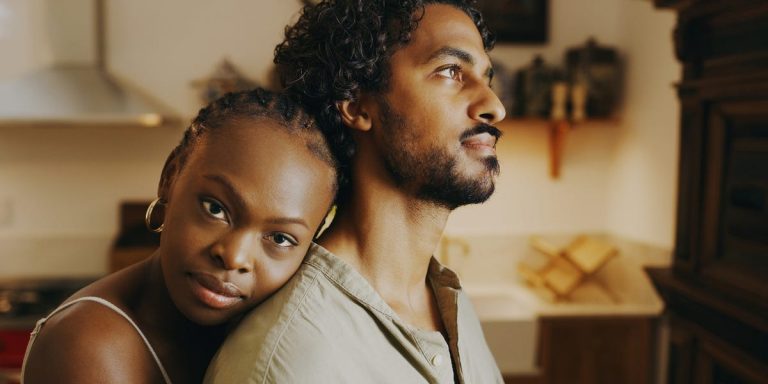You’ve probably heard of the term attachment style, which has become incredibly popular on social media because it’s an important way of understanding relationships.
Your attachment style influences how you behave in relationships and also influences whether your relationships are healthy or unhealthy. Attachment styles usually date back to childhood, but the good news is that understanding your individual attachment style can give you a better understanding of how and why you behave the way you do – meaning you can have healthier relationships in the future.
There are three main types of attachment styles: anxious attachment, avoidant attachment, and secure attachment.
Here we take a closer look at what it means to have an anxious attachment style.
Attachment Styles BooksThorntree PressPolysecure: Attachment, Trauma, and Consensual Non-MonogamyBluebird Attached: Are You Anxious, Avoidant, or Secure? How the Science of Adult Attachment Can Help You Find and Keep Love
Get 30% off now
The Power of Attachment That Rings True: How to Build Deep and Lasting Intimate Relationships Lockridge Press Attachment Theory: A Guide to Strengthening the Relationships in Your Life
What are attachment styles?
Your attachment style is established in childhood, usually through your relationships with your parents, and it determines how you relate to your partner as an adult.
“Attachment styles develop as a result of the bonds we form with our primary caregivers, usually our parents, when we’re young,” explains Relate counsellor Holly Roberts. “Attachment is formed from the support, protection and care we receive from our parents, and we also learn how to regulate our emotions based on how our parents interact with us,” she adds.
You may not realize it, but all of this sticks with you when you enter an adult relationship.
What is an anxious attachment style?
An anxious attachment style means you feel insecure, anxious, or just plain insecure in your relationships. “Feelings of low self-esteem are common with this attachment style,” Holly explains. “You might describe yourself as ‘dependent’ or ‘clingy’. You seek closeness with others, but that closeness may never feel close enough.”
This might mean that as well as wanting reassurance, you feel especially anxious about your partner going out or doing things without you. As Holly explains, “You want a relationship to make you feel safe and you feel anxious when your partner isn’t around.”
Klaus Wedfeldt
Where does an anxious attachment style come from?
Holly explains that an anxious attachment style could mean that the bonds you formed with your parents or caregivers as a child were constantly disrupted or threatened.
For example, “maybe a parent was there for a while and then was gone for an extended period of time,” she continues. “The care and attention they needed was inconsistent, and anxiety may have arisen from a fear that the parent might not return.”
“This can leave you thinking, ‘What’s wrong with me?’ or ‘Am I not good enough?'” Holly says. And these are questions that can carry over into relationships into adulthood.
Plus, outside of romantic relationships, you might find yourself seeking approval from your parents even as an adult. “You want to win their attention and their love,” says Holly. “So you might try to please them by getting a good job or doing things you think will make them happy.”
Related
Who should you date if you have an anxious attachment style?
As you begin to understand your own attachment style a bit more, you can start to think about which other attachment styles you might (or might not) fit with, or at least prepare yourself for how your relationship might play out with someone who is anxious, avoidant, or secure.
There are three combos:
Anxious + Insecure: “People with anxious attachment styles tend to be attracted to people who have anxious attachment styles,” explains Holly. While this might mean the relationship is very close between the two of you (because you want to spend lots of time with each other), it could also lead to an unhealthy dependency on each other, which is something to be wary of, says Holly.
Insecure + Secure: Relationships between an anxious and a secure person can work really well, says Holly, but will likely be more satisfying for someone with an anxious attachment. “A secure partner can give the reassurance and certainty that an anxious partner needs, but this can be challenging in the long run, and the partner’s ‘dependency’ can get out of hand.”
Anxious + Avoidant: “An anxious and avoidant attachment relationship is unlikely to work out. It will be like a game of cat and mouse, where the anxious partner is always trying to get closer and the avoidant partner is always trying to run away,” explains Holly. And this relationship could actually make the situation worse. “The more the anxious partner tries to get closer, the more the avoidant partner will push away. One person’s behavior will provoke the other’s behavior, and it will be difficult to find a middle ground.”
Compassionate Eye Foundation/Steve Smith
How can you improve your attachment style?
Now that you have established your attachment style, how can you feel more secure and reduce your anxious and avoidant behaviors?
Holly explains that if you don’t have a secure attachment style, you’ll tend to expect your partner to meet the emotional needs that you can’t meet yourself – the answer, in this case, is to try to meet these needs yourself, rather than expecting your partner to do it for you.
For example, “if you feel anxious and constantly look to your partner for reassurance, it might help to work on improving your self-esteem,” says Holly. Or, if you find yourself constantly wanting your partner to be there for you, try telling yourself that you can handle it on your own.
“The first step is to identify the negative patterns you regularly follow and interrupt them in a positive way.”
Related article
Source link


